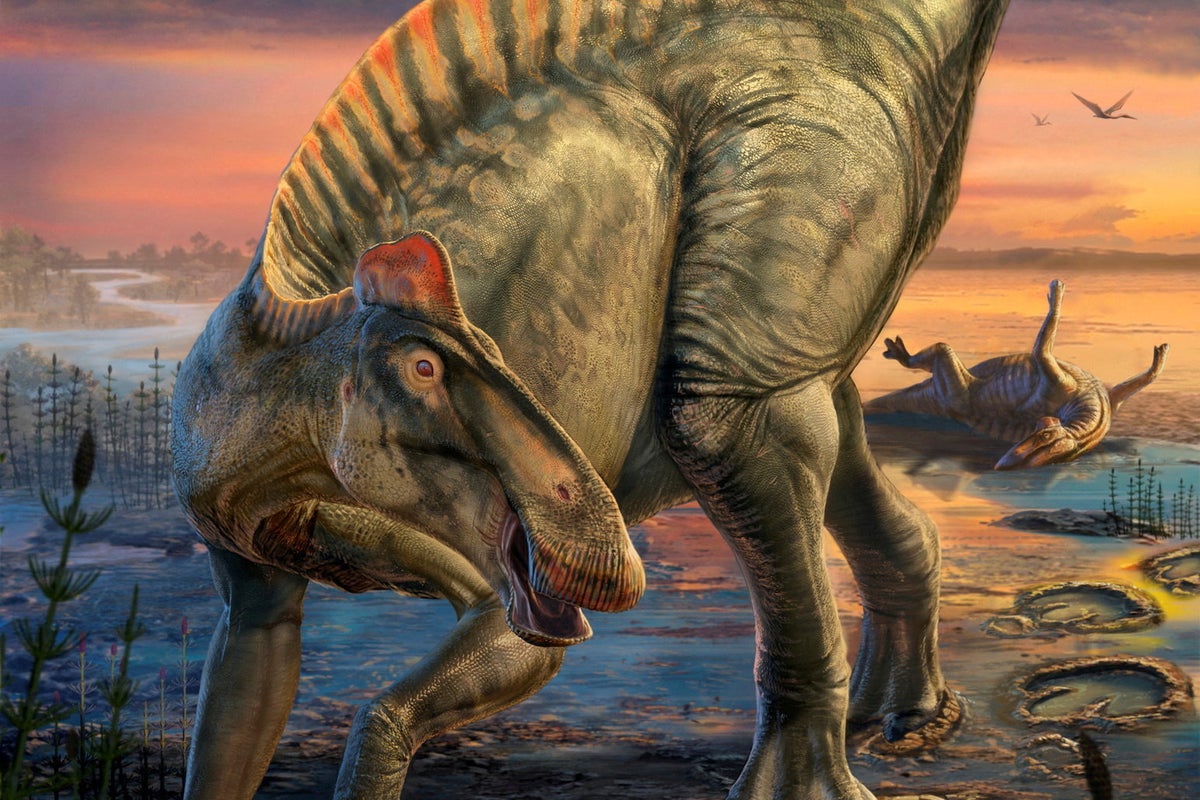
Remains of two dinosaur “mummies” found in Wyoming more than 100 years ago were so well preserved that they still have skin, spikes and hooves intact, according to researchers.
The skeletons of the duck-billed dinosaurs, Edmontosaurus Annectens – which lived more than 66 million years ago in the late Cretaceous period – were unearthed in 1908 in a ravine area of east-central Wyoming.
However, a reexamination of those fossils by paleontologists at the University of Chicago has revealed that, in addition to bones, a skinny layer of clay has preserved the mummified body parts underneath.
“Stunningly preserved” flesh, spikes and even hooves are still intact, according to a new research paper published last week in Science. Soft tissue is rarely preserved in fossils, making accurate reconstructions of the creatures’ appearance difficult.
But due to the large area of preserved external skin surface, the specimens provide the most complete view of a large dinosaur to date.
“Two ‘mummies’ of the end-Cretaceous, duck-billed dinosaur Edmontosaurus Annectens preserve a fleshy crest over the neck and trunk, an interdigitating spike row over the hips and tail, and hooves capping the toes of the hind feet,” the paper’s abstract reads.
“A battery of tests shows that all the fossilized integument (skin, spike, hoof) are preserved as a thin clay template that formed on the surface of a buried carcass during decay prior to loss of all soft tissues and organic compounds.”
Researchers noted that such preservation has only been documented previously in underwater settings that are completely devoid of oxygen.
“We’re seeing the full profile of the dinosaur for the first time,” paleontologist Paul Sereno of the University of Chicago, who led the study published in the journal Science, told NBC. “We’re confident [in] what it looked like.”
When the specimens were first discovered at the turn of the century, it was assumed that they were fossilized skin texture and body parts. But further examination of the skeletons and the discovery of two other Edmontosaurus Annectens have changed scientists’ opinion completely.
One, a late juvenile, is the first subadult dinosaur mummy on record and the first large-bodied dinosaur preserving the fleshy midline over the trunk, the paper states. It was roughly 20 feet long.
The other, an adult specimen, is the first hadrosaurid to preserve the entire spike row from hips to tail tip and the first reptile preserving wedge-shaped pedal hooves. It was roughly 40 feet long.
